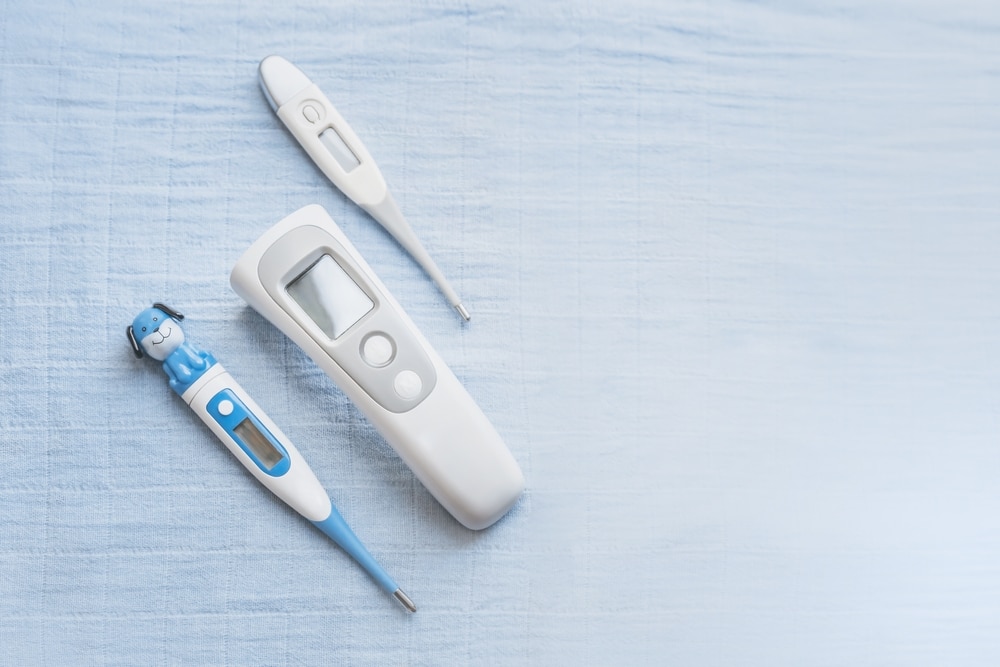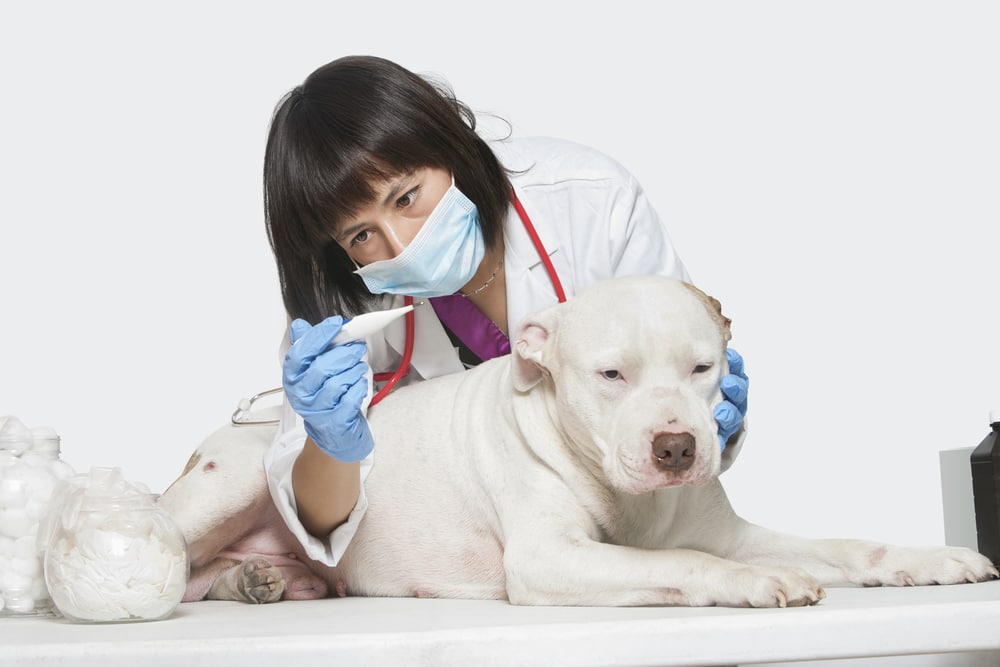When we humans are sick, there are many instruments to help us check if we have a fever. But I can’t exactly ask my dog to please place this thermometer under his tongue. So, how do I check my dog’s temperature?
The most reliable way to check your dog’s temperature is to use a digital thermometer inserted into the rectum. This may sound unpleasant, but when done correctly, it shouldn’t hurt your dog at all.
Table of Contents
Why Is It Necessary To Check A Dog’s Temperature?
A change in your dog’s temperature is often an important primary indicator of disease or infection. If you suspect your dog is not feeling well, checking their temperature can tell you whether or not they have a fever. It can also tell you how high the fever is.
For dogs that are being treated at home for certain ongoing illnesses, checking their temperature can be one of the ways to monitor their progression. If a dog is able to maintain a steady normal temperature, that’s a pretty good sign that it is responding well to the medication.
The Normal Temperature For A Dog
A dog’s normal body temperature should be 101.0 to 102.5°F (38.3 to 39.2°C). But sometimes excitement or panic and ambient environmental temperature can affect this reading.
Any extreme change in temperature, above 104°F (40.0°C) or below 99°F (37.2°C) is serious. You may need to take your pup to the emergency vet as a result. Prolonged exposure to very high or very low internal temperatures can damage internal organs and affect the way your dog’s body functions.
What You Will Need To Check Your Dog’s Temperature

Here are the list of things you’ll need to do this procedure properly and safely:
- A digital thermometer, specifically one designed for pets. Pet thermometers give faster readings. They also have a flexible tip to prevent discomfort if your dog moves around while someone inserts the thermometer.
- Baby oil or petroleum jelly
- Thermometer sleeve (optional)
- Paper towels
- Treats or a spoonful of unsweetened natural peanut butter
How To Check Your Dog’s Temperature
Checking a dog’s temperature is often a two-person task. Even the calmest dogs may not appreciate someone taking their temperature. If you are struggling alone with your dog, you may not be able to get an accurate reading.
Have someone else gently hold your dog in a standing up or laying down position. If they are standing, most dogs will suddenly sit when someone is checking their temperature. So, make sure the person holding them has an arm placed gently underneath their belly to prevent this. Distracting them with a toy or their favorite treats like a spoon of peanut butter can make the whole process a lot less scary.
If you are using a thermometer sleeve, place it onto your thermometer. Sleeves help prevent contamination and make cleanup easier. Lubricate the tip of your thermometer with a pea-sized amount of petroleum jelly or baby oil before inserting it one inch into your dog’s anus. Gently angle the thermometer so that the tip is touching the walls of the rectum, rather than pointing straight in. this will help you get a more accurate reading of the temperature of the body rather than of the intestinal content. Remove the thermometer as soon as you get a reading and wipe the excess lubricant off with paper towels.
Alternative Methods
Let’s start with an aural thermometer.
Aural Thermometer
Nowadays, aural (ear) thermometers have been designed to take your dog’s temperature from deep within the ear canal. These are a great option for dogs who really hate having their temperature taken rectally.
However, the person taking the dog’s temperature will need to insert the aural thermometer deep into the ear, so that the tip sits right next to the eardrum to get an accurate reading. The size and confirmation of the ear canal vary between dogs and it may not be possible to position the thermometer correctly. Wax or dirt buildup in the ears can also affect the accuracy of an ear thermometer. If you feel uncomfortable with this method, talk to your vet.
Axillary Temperature
Axillary or armpit temperature is taken by placing the tip of a digital thermometer under your dog’s arm so that it sits between the upper arm and the chest wall or at the armpit area. You should only use this method when taking temperature via the rectum or ear is not an option because the armpit’s reading is always one or two degrees lower than your dog’s actual body temperature. This may lead you to believe that your dog’s temperature is normal when in reality he’s running a fever and may need medical attention. A study published in the Journal of Animal Hospital Association suggests adding 1°C or 2°F to the temperature reading measured at the armpit to get a more accurate idea of your dog’s true temperature.
Infrared Forehead Thermometer
Pediatric forehead thermometers are difficult to use on dogs because of all the fur covering the skin on their forehead. The reading is always a few degrees lower than your dog’s actual temperature because of the heat dispersion caused by the hairs. However, studies show that you can calibrate a forehead thermometer to accurately measure a dog’s temperature.
To do so, take multiple readings using the forehead thermometer and a digital thermometer inserted rectally. Many forehead thermometers will allow you to calibrate their measurements to correspond to the readings obtained from the rectal thermometer so that subsequent measurements can be taken via the forehead. The calibration is only accurate for that particular dog at that particular time and requires frequent recalibration though. This method is useful in hospital monitoring settings where a dog’s temperature may need to be taken every 15 minutes but is not recommended for home use.
In Conclusion: How Do I Check My Dog’s Temperature?
Taking your dog’s temperature is a great way to tell if they are sick or to monitor their response to treatment. There are a few ways to safely check your dog’s temperature at home. Of these, using a digital thermometer inserted rectally is the most accurate method, albeit slightly unpleasant. Alternatives such as ear, forehead, or armpit readings should be used only when taking rectal temperature is not an option because they may not be as accurate and paint an inaccurate picture of your dog’s condition.
So, now that you know how to take your dog’s temperature, are you leaving this to the vets or ready to jump in? Let us know in the comments below!
